These 7 Brands Used Augmented Reality Creatively in 2018
2018 has seen brands fighting tooth and claw to attract consumers’ attention. Competition is fierce in every market so successful brands are using digital tools to support their creativity.
Augmented Reality is one such tool and brands are using it to raise brand awareness, increase engagement as well as sales. According to emarketer.com, the global augmented reality ad revenues are expected to top $2 billion by 2022.
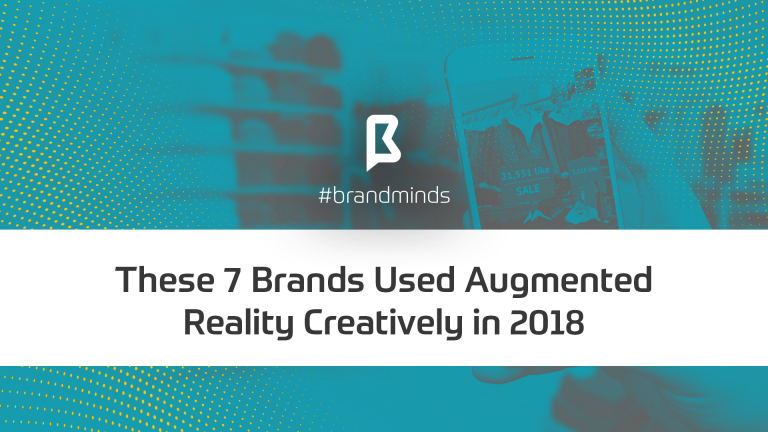
Let’s see how these 7 brands used Augmented Reality creatively in 2018:
1. National Geographic
The National Geographic is one of the oldest publishing houses in the world: this year it turned 130 years old (Happy Birthday, Nat Geo!).
The magazine managed to keep itself young and appealing to readers of all ages by embracing new and up-to-date channels of communication.
One of this year’s monthly edition delighted readers with an Augmented Reality cover:
2. Barilla
For retail products, the battle is fought on the shelves of the supermarkets.
Brands are implementing various marketing strategies to stand out and get their products from shelves to checkout: smart packaging design, discount prices, 2-in-1 offers etc.
Barilla joined the ranks of technology driven brands and used Augmented Reality for their pasta boxes to trigger pasta recipes:
3. LEGO
LEGO is kids’ favourite play game and the world’s largest toy company by revenues, with sales amounting to $2.1 billion in 2015. Founded in 1932, today’s parents grew up playing with LEGO and are passing down this game to their children.
Over the past years, the brand embarked on a new direction, shifting towards entertaining both kids and their parents with two blockbuster movies: The Lego Movie (2014) and The Lego Batman Movie (2017).
Everyone loved seeing the tiny yellow figurines coming to life on the big screen, so the brand now offers the same experience although on smaller screens using Augmented Reality.
This is what Lego in AR looks like as presented at the 2018 Apple Worldwide Developers Conference:
4. Moschino and H&M
Fashion and technology have a history together. Alexander McQueen was the first fashion designer to include robots: he used two robots in his 1999 fashion show. In 2006 he took it one step further and sent Kate Moss down the runway not in flesh and blood, but as a holograph.
In 2018, Dolce and Gabbana used drones to show its handbags collection and Moschino paired with H&M to create an Augmented Reality experience for their global launch event in New York:
5. Walmart
For retail chain stores, it’s not enough to display great products at discounted prices.
You need to go even further and add entertaining to your offer!
With the help of Augmented Reality tech, Walmart is providing its shoppers with in-aisle fun and entertainment.
6. BMW
For anyone passionate about cars, going to automobile events or launches and seeing so many shiny new cars on display would be a dream come true!
But not many people are fortunate enough to have such an experience.
BMW caters to their needs and uses Augmented Reality to bring the car to them:
7. 19 Crimes
Every wine label tells the story of the wine: how man and nature worked together to produce that particular wine variety.
What if you could use more than words to convey the story?
Well, now it’s possible.
Here is how this Australian wine brand uses Augmented Reality to tell the story of its lineup wines:
Join the Conversation
We’d love to hear what you have to say.
Get in touch with us on Facebook and Twitter.
3 Retail Brands Eliminating Checkout Lines
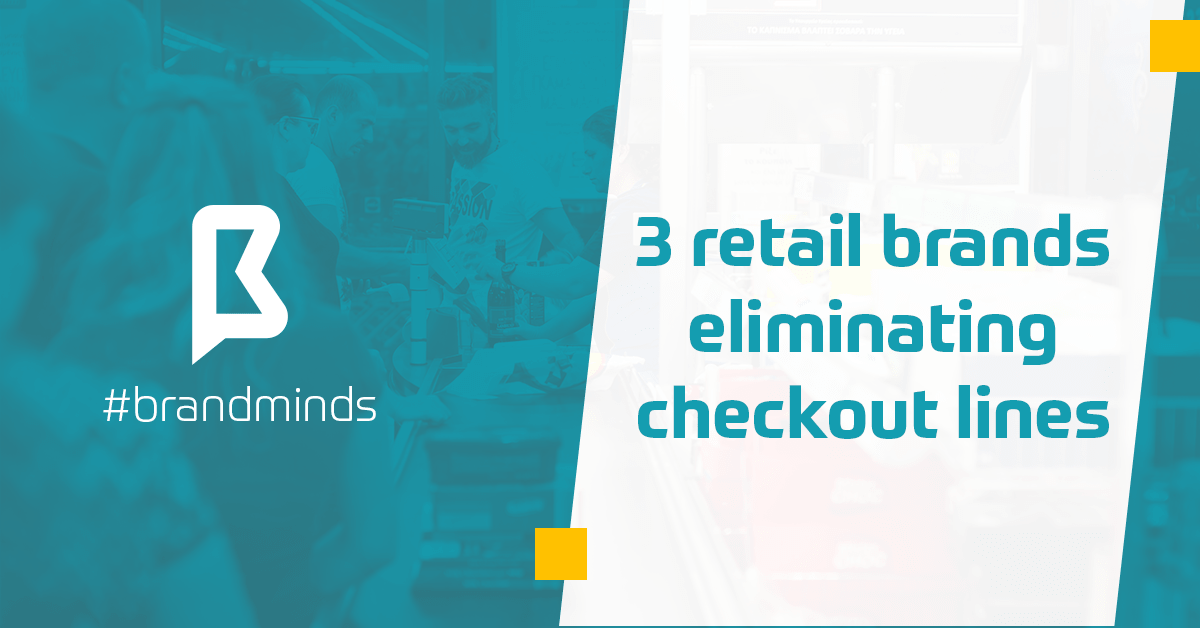
Shopping is the exchange of goods for money. The definition is straightforward, but fails to encompass the various meanings it has for different people. “Going shopping” strikes terror in the hearts of men when spoken by their wives or girlfriends. When spoken by women, it means pleasure, therapy, hobby or sport. When spoken by teenage girls it adds an extra layer of being a social activity and a form of entertainment.
Whatever shopping means to you, everyone has this in common: we all hate waiting in long lines to checkout!
Retail brands are looking for new ways to improve customer experience in-store. According to 451 Research, 86 percent of US consumers said they left a store due to long lines, resulting in a purchase at a different retailer or no purchase at all. This behaviour has lead to approximately $37.7 billion lost in potential sales. So it’s understandable why a frictionless checkout by eliminating cashiers altogether is one of the short-term objectives of retail brands.
You may think this objective is in the not-so-distant future, but you would be wrong. Some retail brands are already living in the future.
Here are 3 retail brands implementing cashierless checkout today.
1. Amazon Go – Just Walk Out
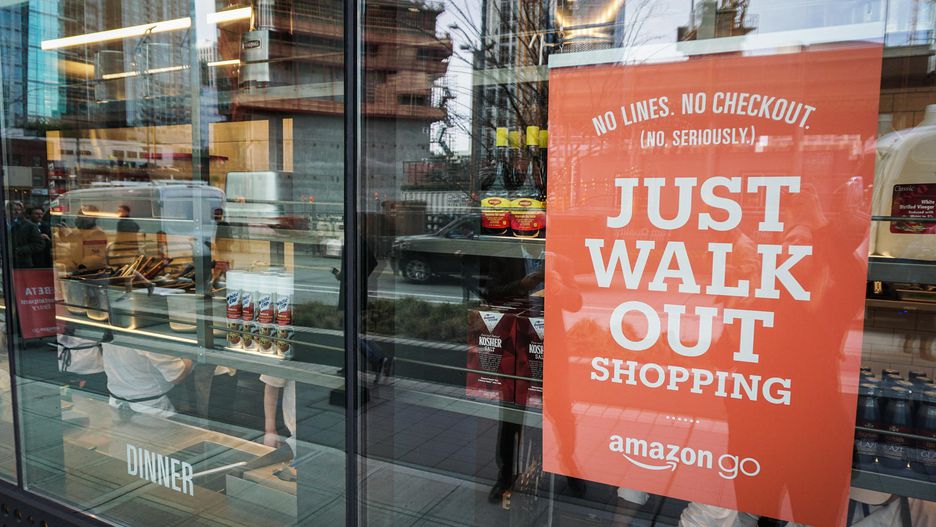
image source: cnet.com
Amazon Go opened in January 2018 its automated in-store system – Just Walk Out.
The system relies on technologies such as computer vision, sensor fusion and deep learning to ensure a streamlined shopping experience. There are no cashiers or checkout lines. The system determines what a customer has picked up before making the appropriate charges to their Amazon account when they leave the store (info source).
2. Saturn Express – Europe’s first checkout-free consumer electronics store
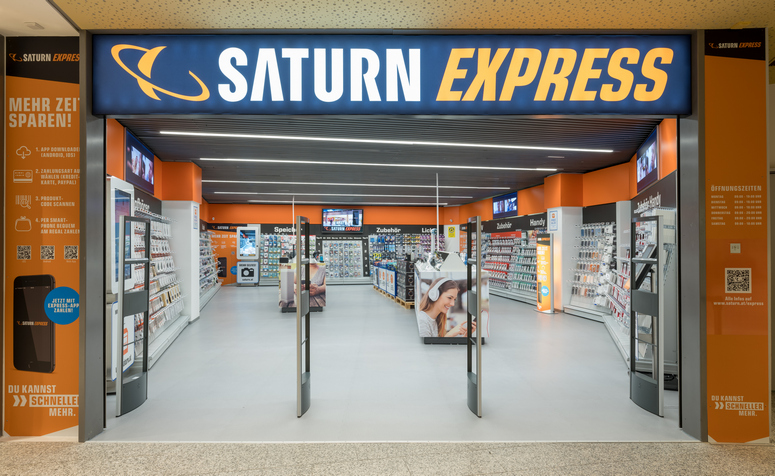
image source: across-magazine.com
Saturn Express is the first European brand to open a checkout-free consumer electronics store this spring.
The store combines a digital shopping experience with sound advice. Customers can seek sales assistance in the traditional manner and pay for items using an app. The app was specially developed for Saturn and allows customers to scan the barcode of the items they want to buy and pay for them by credit card or PayPal. And that’s it! No waiting in line at the checkout (info source).
3. Inokyo – Retail startup
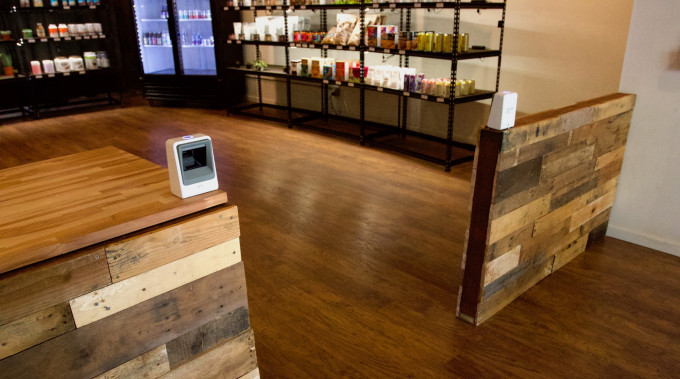
image source: techcrunch.com
Inokyo is an autonomous retail startup and just launched its prototype cashierless autonomous retail store.
Here’s how the Inokyo store works. Customers download Inokyo’s app, connect a payment method and get a QR code. Upon walking into the shop, they wave the QR code in front of a little sensor. Overhead cameras scan the body shape and clothing without facial recognition in order to track customers as they move around the store. Meanwhile, on-shelf cameras track when products are picked up or put back. Combined, knowing who’s where and what’s grabbed, lets it assign the items to the shopping cart. Customers scan again on their way out, and later they get a receipt detailing the charges (info source).

